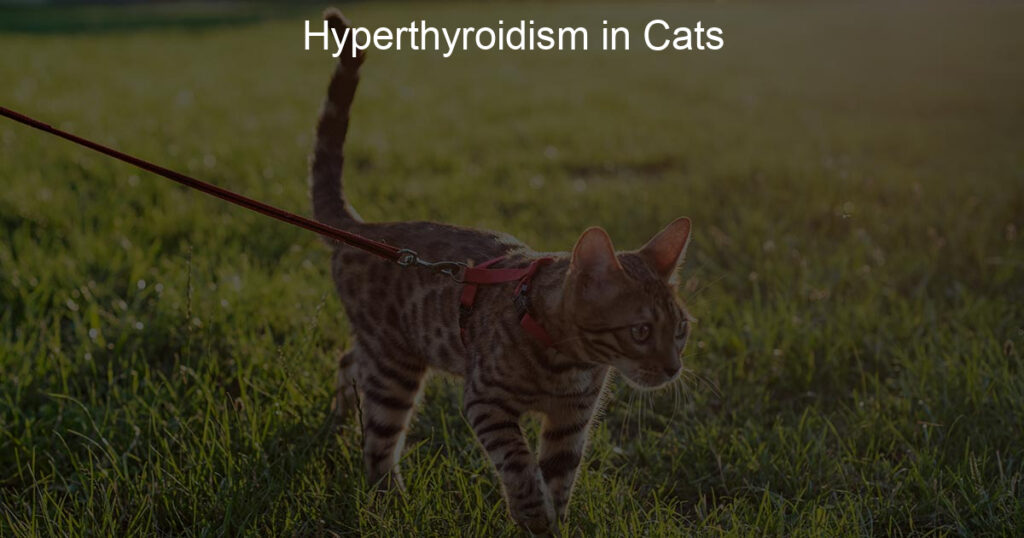If you’re a tattoo lover and are looking to get an exotic or custom design, then you may want to start researching the health of your favorite cats. Hyperthyroidism is a major concern in cats around the world today; it’s caused by their overactive thyroid gland not being able to correctly regulate hormones within their body.
In this blog post, we’ll be exploring the causes of hyperthyroidism as well as its symptoms and treatment options available so that you can make sure that your next tattoo comes from only the healthiest of feline friends!
How long does a cat live with hyperthyroidism?
The exact lifespan of a cat with hyperthyroidism depends on how early the condition is noticed and aggressively managed. Early detection and comprehensive treatment can help extend the cat’s lifespan to near typical life expectancy; however, without treatment, your pet may succumb to serious complications within 2-4 years after being diagnosed.
Signs of hyperthyroidism can often be subtle in cats, so it is important for owners to recognize any changes in appetite or weight, and seek veterinary advice if their beloved companion experiences any type of illness or distress.
With regular monitoring and treatments, your cat can stay comfortable and enjoy a good quality of life despite this sometimes difficult medical condition.
What are the early signs of hyperthyroidism in cats?
If you have a cat, it is important to be aware of early signs of hyperthyroidism. Hyperthyroidism is a common and sometimes serious condition in cats. Early signs can include weight loss despite eating more, increased thirst and urination, restlessness, an increase in grooming, excessive vocalization, vomiting, diarrhea, and poor coat condition.
Left untreated, hyperthyroidism can cause severe damage to the heart so if your cat is exhibiting any of these symptoms it’s best to visit your vet for diagnosis and treatment.
What triggers hyperthyroidism in cats?
Hyperthyroidism in cats is a hormonal disorder and the most common form of hyperthyroidism is caused by the over-production of thyroid hormones from an enlarged thyroid gland, known as an adenoma.
It occurs mainly in older cats and can be triggered when the user accidentally gives the cat too much iodine or when the thyroid gland overproduces hormones. Environmental factors, such as pollution and certain breeds, may also increase a cat’s risk of developing hyperthyroidism.
Treatment options include medication, dietary changes, surgery, radioactive iodine therapy, and supportive therapies such as anti-anxiety. Fortunately, with proper treatment, cats with hyperthyroidism can live happy lives and maintain their optimal health for longer periods of time.
Are cats in pain with hyperthyroidism?
Hyperthyroidism is a very common condition among cats, and while the symptoms of increased appetite and weight loss can be distressing for owners, it is important to remember that if left untreated, this condition can bring about significant pain to cats.
Although hyperthyroidism does not necessarily cause any obvious signs of pain in cats, the side effects – such as behavioral changes and illnesses like hypertension and heart disease – may lead to chronic health issues which can cause long-term pain.
Therefore, regular checkups and appropriate treatments are essential in order to ensure that cats with hyperthyroidism have as comfortable a life as possible.
What not to feed a cat with hyperthyroidism?
Taking care of a cat with hyperthyroidism can be tricky because certain food may worsen the condition. It is important to provide cat food that is specially designed for cats with thyroid issues, as it will contain reduced amounts of iodine and other vital ingredients.
Owners should be cautious about providing treats and table scraps, as many common foods are high in iodine, including fish, seafood, and seaweed snacks. Medical consultation should always be sought before changing a cat’s diet and providing supplements such as kelp and greens.
Avoiding over-medicating your cat is also key, be wary of giving them medication you already have at home, as some may contain too much iodine. By following these guidelines, you can ensure that your furry companion remains happy and healthy!
It’s A Wrap
Hyperthyroidism in cats can be a difficult and daunting diagnosis to receive, but the good news is that there are treatments available that can help reduce symptoms and bring your cat back to good health.
With proper medical management and diet, hyperthyroidism in cats does not have to affect their quality of life too drastically. Even so, it’s important to always pay close attention to your cat’s behavior and keep up with regular vet visits. In addition, maintaining a healthy lifestyle for your pet is essential for managing any underlying thyroid issues.
As a responsible pet owner, make sure you take all necessary precautions when it comes to your pet’s health! After all, our furry friends deserve unconditional love and care—just like we would want for ourselves!












